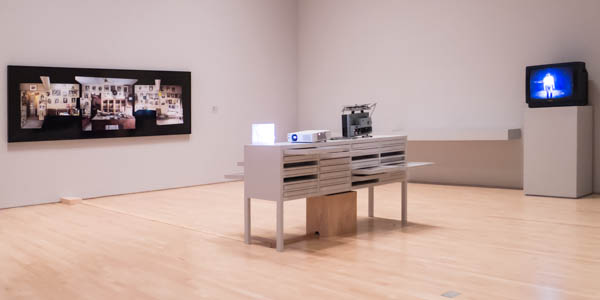Six Lines of Flight: Shifting Geographies in Contemporary Art has just closed at San Francisco Museum of Modern Art [Link] [Link]
The topic of the exhibition – contemporary art in six “far-flung” cities not typically defined as traditional centers of the art world: Beirut, Cali, Cluj-Napoca, Ho Chi Minh City, San Francisco, Tangier.
Ostensibly this is meant to be about changing geographies of cultural production, though I saw little that was about alternate means of the production of “art”, and the auction rooms of New York, London and Paris seem to be doing better business than ever. Much of the work is interesting as satirical critique, contemporary art as social and political commentary – this is all very familiar as politically engaged art.
What really struck me was that so many of the works on exhibition drew deeply on what I call
an archaeological sensibility – the way we work on what remains.
So globalist themes of displacement, estrangement, temporal and spatial disorientation, political oppression and conflict are dealt with through remains of the past, archives, traces and evidences, reworked media traces – contested past-in-the-present.
Oscar Muñoz, Narcisos secos – a fascinating fixing of carbon dust, playing on the materiality of media, transiency and trace. In other works he draws upon archival remains of events in Colombia’s recent past.˜
Lamia Joreige, Beirut, Autopsy of a City, 1200 BC – 2010 – an archaeological timeline of the city.
Joana Hadjithomas and Khalil Joreige, Postcards of War, from Wonder Beiruit – Story of a Pyromaniac Photographer 1997-2006 – melted, remediated photography.
Akram Zaatari, Twenty Eight Nights and a Poem – an excavation of the photography studio of Hashem el Madani.
Adrian Ghenie, Dada is Dead – Ceauşescu’s Romania through reworked media traces.








More on archaeological sensibilities in contemporary art –
Contemporary Art between Time and History – Musée d’art contemporain de Montréal – [Link]